Contributing Writer
Private Fleets Face Stiff Competition From For-Hire Carriers in Battle for Drivers
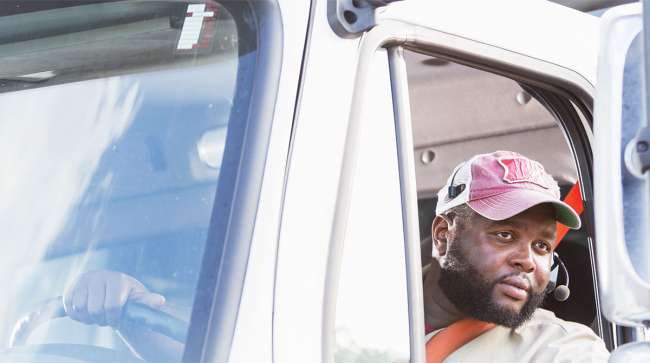
[Stay on top of transportation news: Get TTNews in your inbox.]
Private fleets once had a clear advantage in the endless competition to hire trained truck drivers and provide them with the equipment needed to move America’s goods. In many cases, shippers operating their own, in-house fleets could offer drivers better pay, more favorable routes, a stable work environment and reliable, late-model trucks.
But the disruptions caused by the COVID-19 pandemic and the changes it has triggered to the economy have upended that advantage, according to fleet managers and industry consultants.
Surging freight demand and the industry’s worsening labor shortage mean private fleets have to fight even harder to recruit and retain every driver. They are raising pay in response to a spate of compensation increases at the big for-hire motor carriers. And supply chain constraints at truck manufacturers mean that private fleets now find themselves waiting in line longer to get new equipment delivered.

VonAchen
These challenges aren’t entirely new, but the pandemic accelerated them, said Jim VonAchen, director of transportation support for McLane Co., a major distributor of groceries and packaged goods based in Temple, Texas.
McLane ranks No. 8 on the Transport Topics Top 100 list of the largest private carriers in North America.
There’s just a lot more competition in every segment of the freight and transportation business, said Brian Johnston, senior director of transportation at Core-Mark International. The company is one of the largest distributors of fresh food, snacks and tobacco goods to the convenience retail industry.
Core-Mark ranks No. 32 on the private TT100.
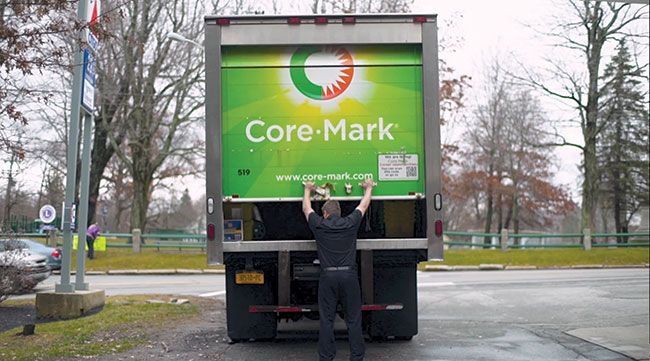
A Core-Mark driver makes a delivery. (Core-Mark Holdings Inc. via Vimeo)
“Common carriers are trying even harder to attract drivers from private fleets, and they are doing it with money,” said Michael Zimmerman, a partner with the Kearney consulting firm.
Multiple factors will increase that competition in the future, he said. Truckers are retiring. Other industries are poaching drivers. The Federal Motor Carrier Safety Administration’s Drug and Alcohol Clearinghouse makes it harder for cited drivers to move from one carrier to another.
At the same time, for-hire carriers are trying to improve working conditions by using the same techniques as private fleets, including purchasing better equipment and creating routes that allow for more home time.
“The relative advantage of private fleets may shrink going forward,” Zimmerman said.

How much impact does driver pay have in hiring drivers? And what else can fleets do to recruit and retain quality talent? Hear a snippet from DriverReach founder and CEO Jeremy Reymer, above, and listen to the full program at RoadSigns.TTNews.com.
One of the issues is that the pandemic and the changing shape of the U.S. economy is disrupting nearly every segment of the supply chain, Core-Mark’s Johnston told Transport Topics.
As an example, Core-Mark’s experience with convenience store staples illustrates many of the hurdles.
“We can’t get enough of some products, like beef jerky, into the system,” Johnston said.
Suppliers have trouble sourcing raw materials and the labor to make the product. Packaging is in short supply. And then a lack of trucks and drivers hinders delivery to the Core-Mark distribution network.
Transporting the jerky to stores faces another set of hurdles once it gets to a Core-Mark distribution center.
►Presenting the Top 100 Private Carriers
►Top 100 Private interactive map
►Private fleets, for-hire carriers battle for drivers
►Market shifts, mergers alter sector rankings
Sector Rankings
Food Service | Grocery
Beverage
Petroleum/Chemical
Industrial Gases | Agriculture/Food Processing
Wholesale/Retail | Manufacturing Equipment Rental | Building Materials
Waste Management
Paper/Office Products
Construction
Health Care
Uniform Rental
Media & Entertainment
“I could hire more than 500 drivers right away,” Johnston said. “I have work for 300 drivers today. I need more than that to handle the retirements.”
And then there’s the issue of obtaining new trucks. Core-Mark likes to use the newest equipment available and rarely keeps a truck for more than seven years. But new trucks are in high demand and short supply. Orders are delayed.
“We have had to hang on to trailers and tractors this year longer than we have done historically,” Johnston said.
Other equipment, such as the product scanners that drivers use to log deliveries, process customer credits and keep track of their hours of service, also are in short supply, he said.
Core-Mark is tackling these issues in a variety of ways.
“We are being more creative based on what the workforce today wants,” Johnston said.
The company is integrating more flexible work schedules, including shorter shifts, into its workflow. Drivers have the opportunity to work a four-, five- or six-day workweek.
“If a delivery driver wants to make a lot of money, the opportunity is available,” he said.
Core-Mark also is doing more outreach via job agencies, temp-to-perm agencies, schools, Veterans Administrations and even local YMCAs. Johnston said the distributor has launched a number of Spanish-speaking community advertising campaigns for workers for the first time in some markets.
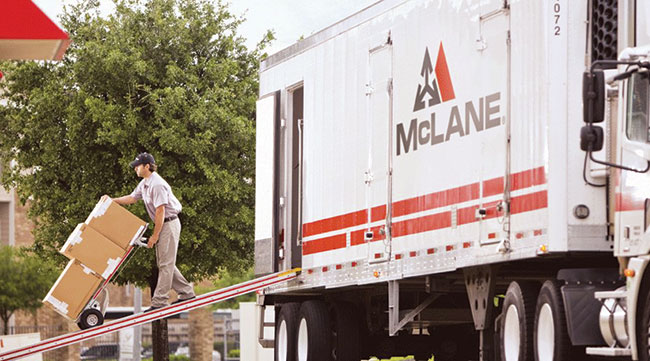
A McLane driver makes a delivery. (McLane via Twitter)
McLane also is ramping up its recruitment efforts.
It has a “Warrior to Wheels” program that targets military veterans with what the company calls an “earn while you learn” training model that utilizes their military training experience, said Barry Taft, the company’s interim director of recruitment.
McLane operates a full-time truck driver trainee program for those with a commercial driver license but little to no experience.
It also has an apprenticeship program for warehouse workers to transition to driver positions.
Driver Pay Escalates
Most private fleets are competing for drivers by raising wages.
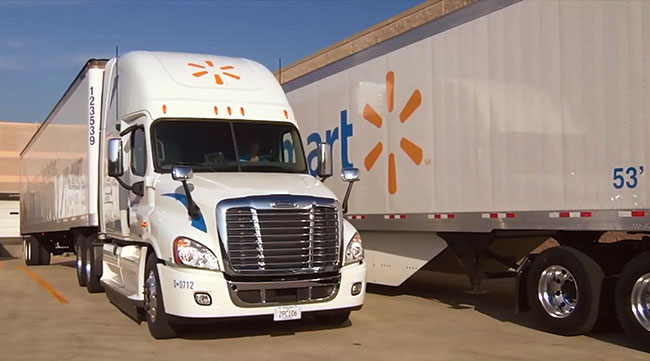
Walmart’s drivers an earn up to $87,500 their first year and receive access to company benefits on the first day. (Walmart Inc.)
Retail giant Walmart is offering an $8,000 sign-on bonus at some locations. Drivers get half after successfully passing on-boarding and being qualified to drive, said Joe Metzger, executive vice president of supply chain operations for Walmart U.S. The remainder comes after six months.
Metzger said Walmart’s drivers now can earn up to $87,500 their first year and receive access to company benefits on the first day.
“We also offer quarterly safety bonuses and recognition,” he said. “And our drivers have consistent weekly schedules, so they know when they’ll be at home and on the road, and there are no split days off.”
That’s helped Walmart increase its private trucking workforce to more than 10,500 drivers this year to keep up with company growth, he said.
Walmart ranks No. 3 on the private TT100.

Jazrawy
Even with so much attention on driver pay, companies need to look at factors beyond wages to keep and retain drivers, said Jane Jazrawy, CEO of CarriersEdge, an Ontario, Canada-based company that develops compliance and safety training tools for fleets.
“Private fleets are now confronting what for-hire fleets have had to do for a long time,” Jazrawy said.
One factor is reducing turnover.
Johnston said Core-Mark experiences almost 50% driver turnover annually.
Driver surveys conducted by CarriersEdge repeatedly have found that communication is a crucial factor in keeping workers on board.
“Drivers want to feel that they are heard and will have someone who will listen and act on their concern,” Jazrawy said. “They just don’t want to be referred to as a truck number.”
Technology Investments
Despite the challenges, some companies are expanding their private fleets to keep up with the e-commerce boom that accelerated during the pandemic.
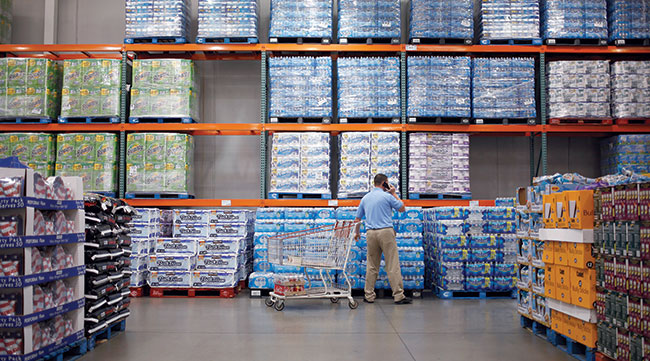
Costco and other retailers have been enhancing their final-mile delivery capabilities as e-commerce demand grows. (Costco)
Costco, for example, spent $1 billion last year to acquire Innovel Solutions, a middle-mile and final-mile delivery and installation business. Now called Costco Logistics, the division handles big and bulky deliveries — such as furniture, televisions and exercise equipment — that previously were vendor drop-shipped.
The move has slashed delivery time from two weeks to five to seven days, Richard Galanti, the retailer’s executive vice president and chief financial officer, said during a May 27 call with analysts and investors. That business has plenty of room for growth, he added.
Costco ranks No. 66 on the private TT100.
Other private fleets are looking to add technology to improve operations.
Halliburton Co., the oil field services firm that ranks No. 4 on the private TT100, is working with Vorto to apply artificial intelligence to how it purchases and trucks sand within its U.S. operations.
Vorto’s platform optimizes thousands of logistics loads per day “while also identifying and addressing issues before they occur. This fits with our strategic priorities to use digital technology to drive down costs in our business,” Halliburton CEO Jeff Miller said in an April 21 conference call with investors.
Halliburton and other private fleets are looking at several technologies to alleviate problems that range from the driver shortage to reducing greenhouse gas emissions.
Alongside our strategic partners, @Neste_NA, @diesel_direct, & TuSimple, we’re taking bold steps to reduce GHG emissions from our operations by pursuing cutting-edge technologies that improve productivity and lessen our environmental impact.
Learn more: https://t.co/wFOE76Q22W pic.twitter.com/YixVCHxPxj — Core Mark HQ (@CoreMarkHQ) July 13, 2021
Core-Mark is working with Penske Truck Leasing to test an electric Freightliner eCascadia. At the same time, it has partnered with autonomous truck developer TuSimple to see how self-driving truck technology might work in its distribution network.
Walmart, meanwhile, is working with autonomous truck startup Gatik to test driverless box trucks.
“With the crazy demand for freight right now,” Jazrawy said, “everybody is re-evaluating what they do, from drivers to executives.”
Want more news? Listen to today's daily briefing below or go here for more info:





